Geoscience Reference
In-Depth Information
Simulation at
S
2
= 0.20
Simulation at
S
2
= 0.90
4
8
3
ˆ
6
ˆ
Q
V2
σ
0
S
2
Q
V2
σ
0
S
2
E=
Simulated
K
r
,
ü
E=
Simulated
K
r
,
ü
2
4
1
2
0
0
-1
-2
-2
-4
-3
0.20
0.25
0.30
0.35
0.40
0.45
0.50
0.20
0.25
0.30
0.35
0.40
0.45
0.50
Time (s)
Time (s)
(a)
(b)
Figure 3.4
A numerical test to confirm the validity of the transfer function
E
x
/
ü
x
at two values of water saturation (20 and 90%).
a)
Simulation at 20% water saturation.
b)
Simulation at 90% water saturation. In both case, there is a perfect agreement between
the numerical simulation and the analytical formula.
10
-1
10
-1
S
=1.0
10
-2
Decrease in saturation
10
-3
10
-2
10
-4
S
= 0.50
10
-3
10
-5
-150
-100
-50
0
50
100
150
0.1
0.2
0.3
0.4
0.5
0.6
0.7
0.8
0.9
1.0
Saturation
Offset (m)
(a)
(b)
Figure 3.5
The effect of water saturation on the coseismic response.
a)
The effect of water saturation on the maximum amplitude of the
coseismic response.
b)
The effect of water saturation on the coseismic response as recorded at the simulated electrodes.
response with water saturation. Consequently, a perfect
reproduction of the coseismic signal during seismoelec-
tric surveys reflects the saturation of the medium and
its absence in the case of the dry conditions. We think
that the analysis of the coseismic signal may provide
key information on moisture
In this sense, we divided the 400 m × 400 m domain
in the previous problem vertically into two tabular layers:
the first is a shallow unsaturated layer that represents the
vadose zone, and the second is a fully saturated layer
(Figure 3.6). The petrophysical parameters used to simu-
late the seismoelectric data are identical, except for the
water saturation difference between the layers. That
means that all other petrophysical parameters in the
entire domain are homogeneous throughout the entire
domain of the model (perfect matching layers excluded).
The simulations were realized with three values of satu-
ration for the vadose zone (the upper layer) S
2
= 0.1,
conditions of
the
subsurface.
3.2.5 Seismoelectric conversion
We dedicate this section to the study of the ability of the
seismoelectric method to detect saturation contrasts.




















































































































































































































































































